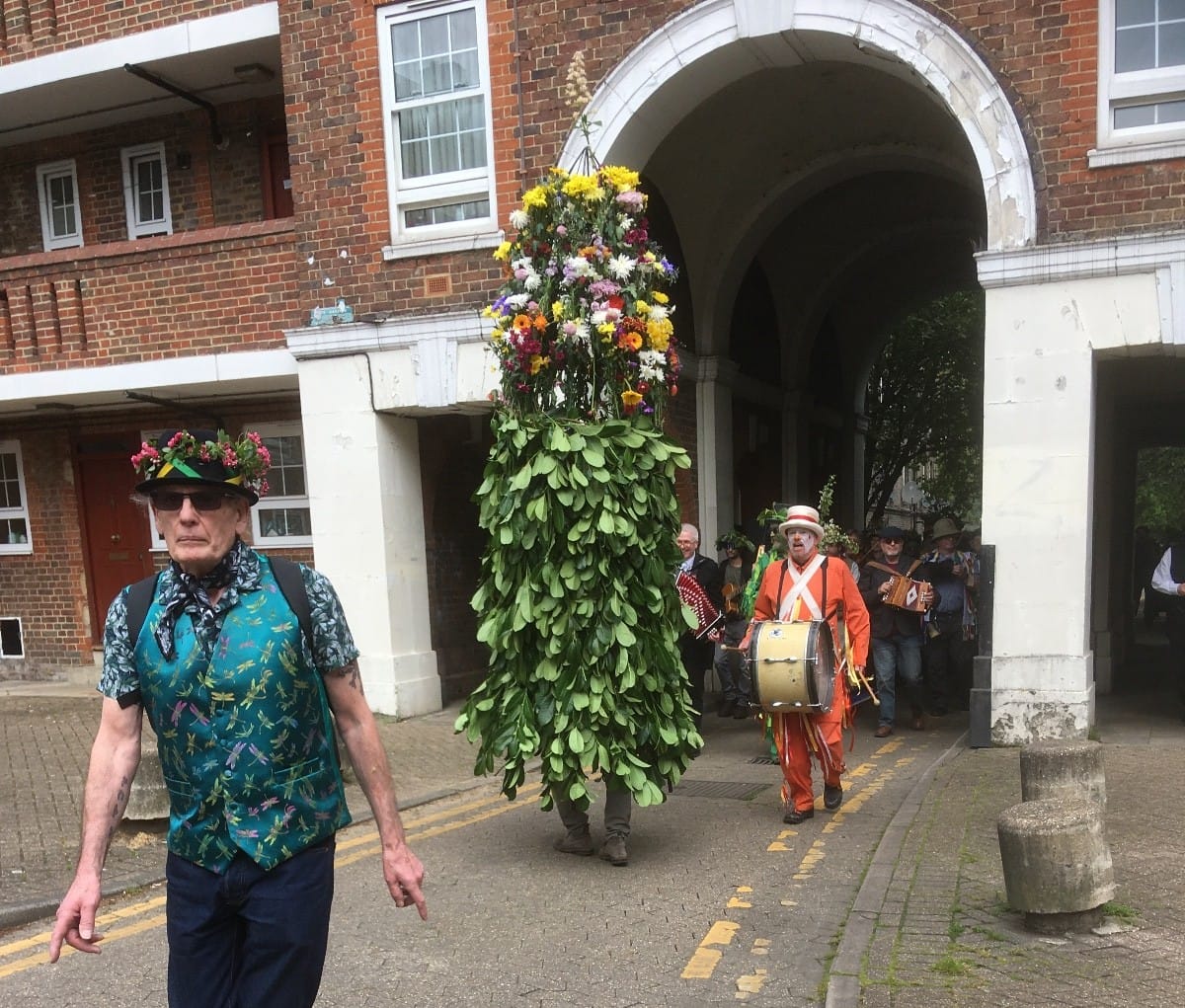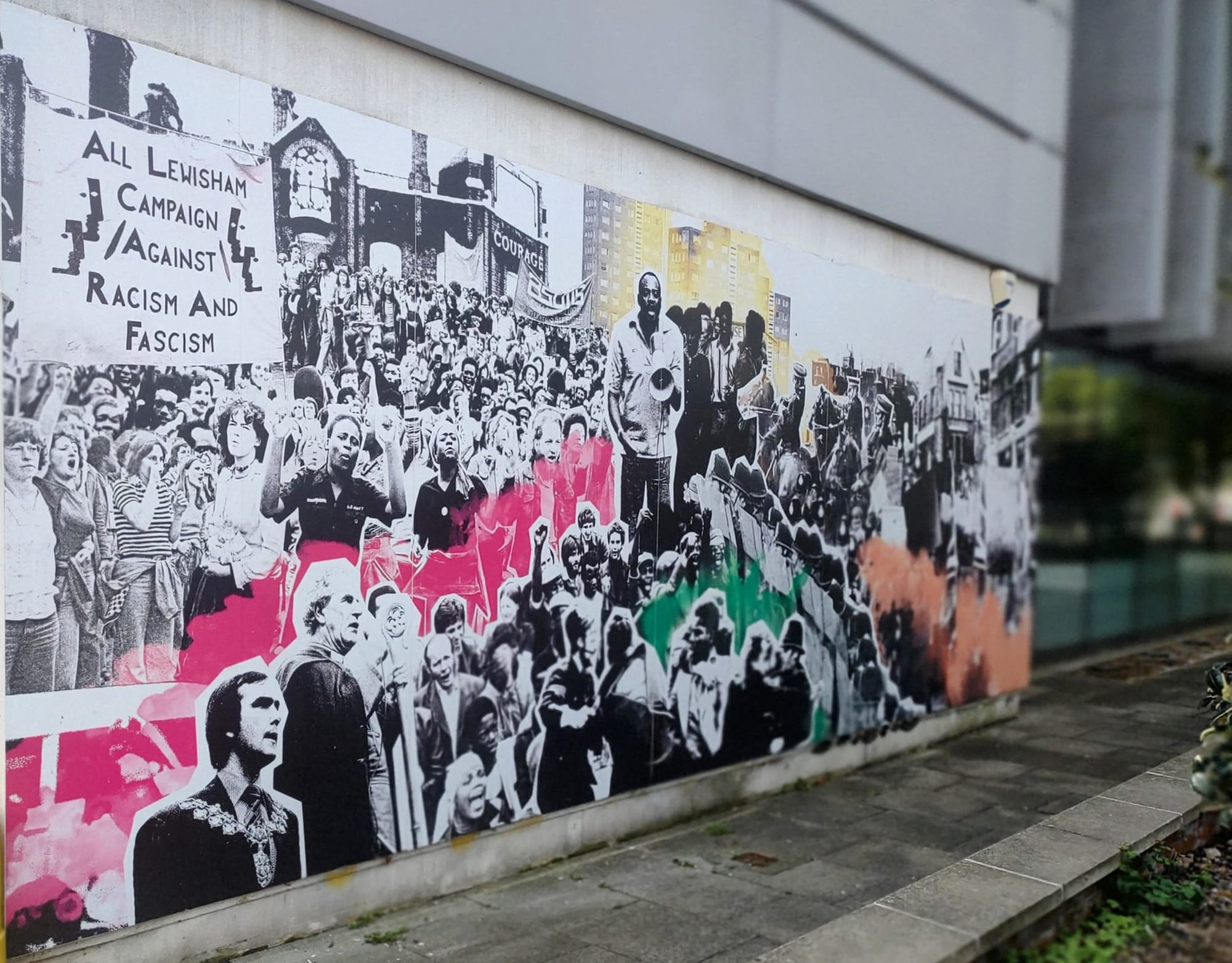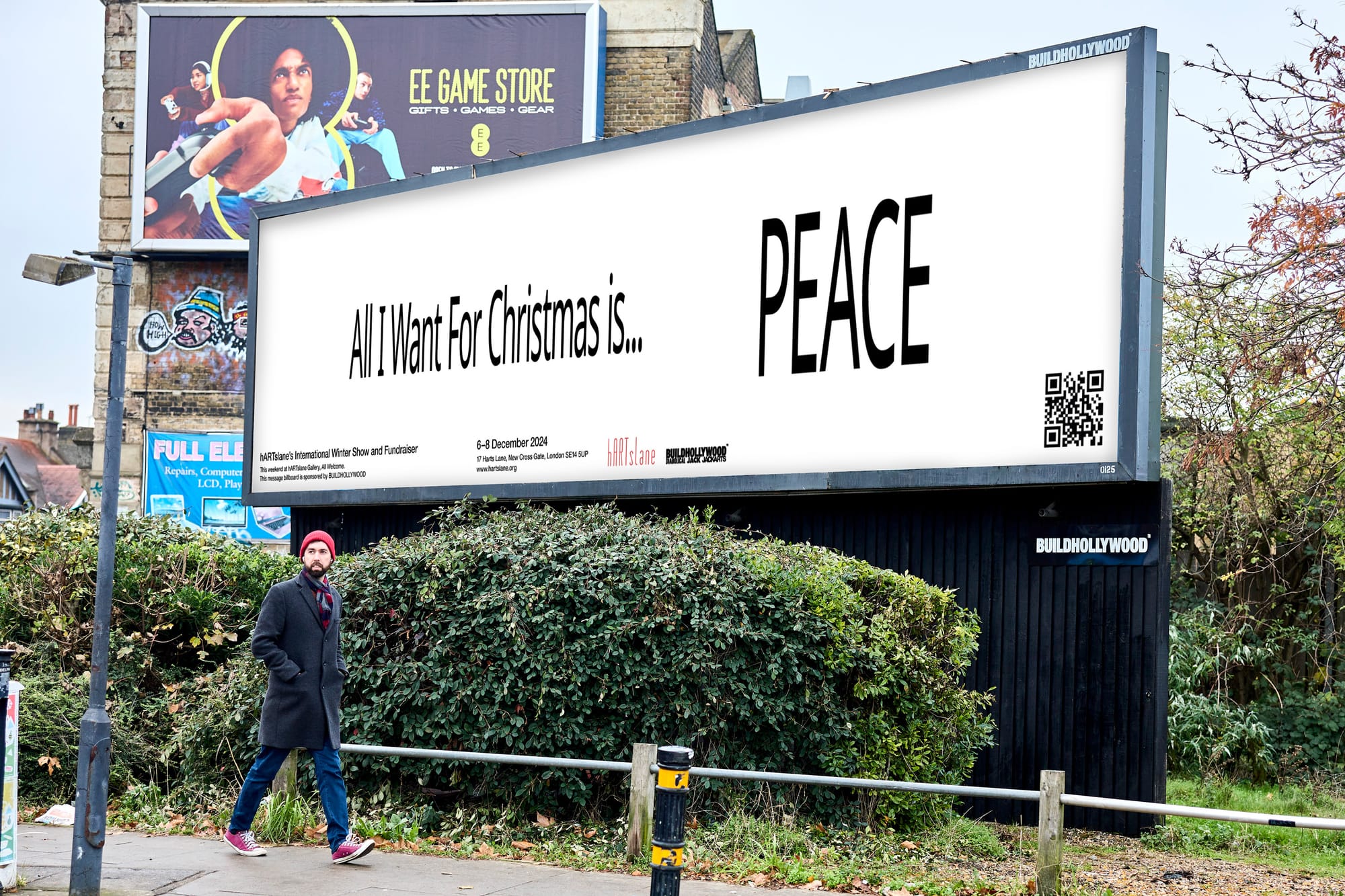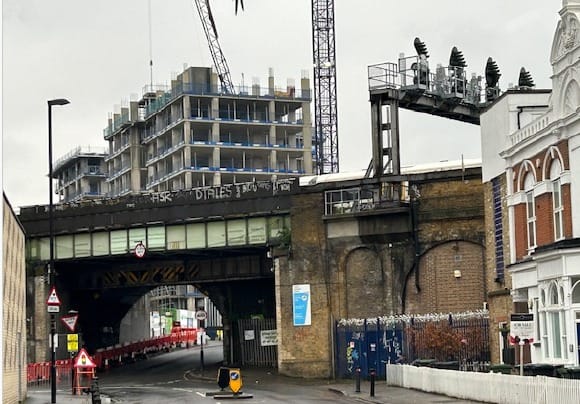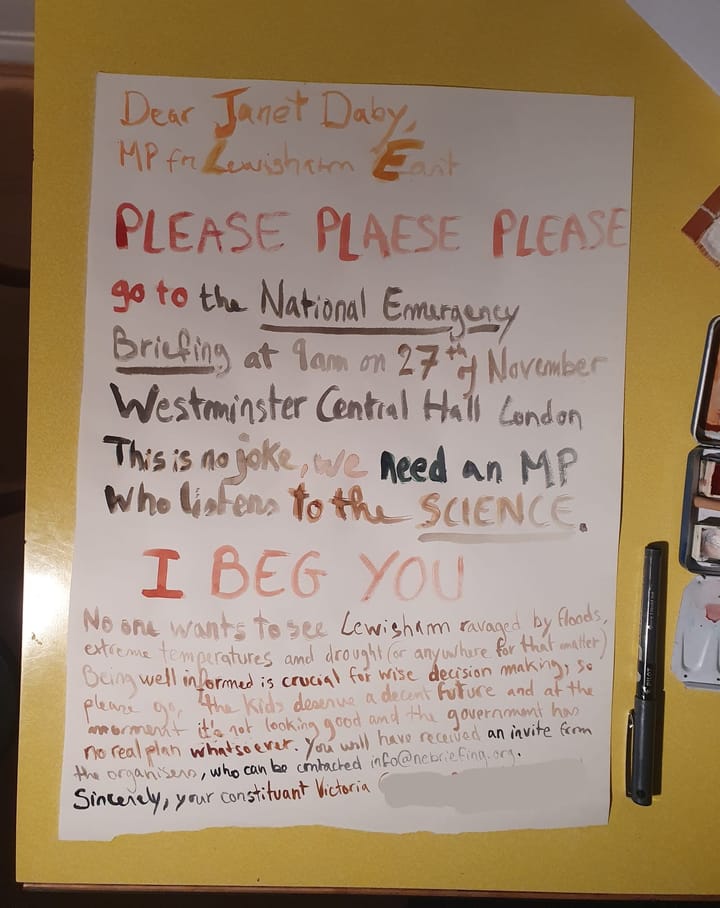Deptford's Jack in the Green lives again
Kirsten Downer finally catches up with Jack on his May Day parade through Deptford and Greenwich, and investigates the folklore behind him.
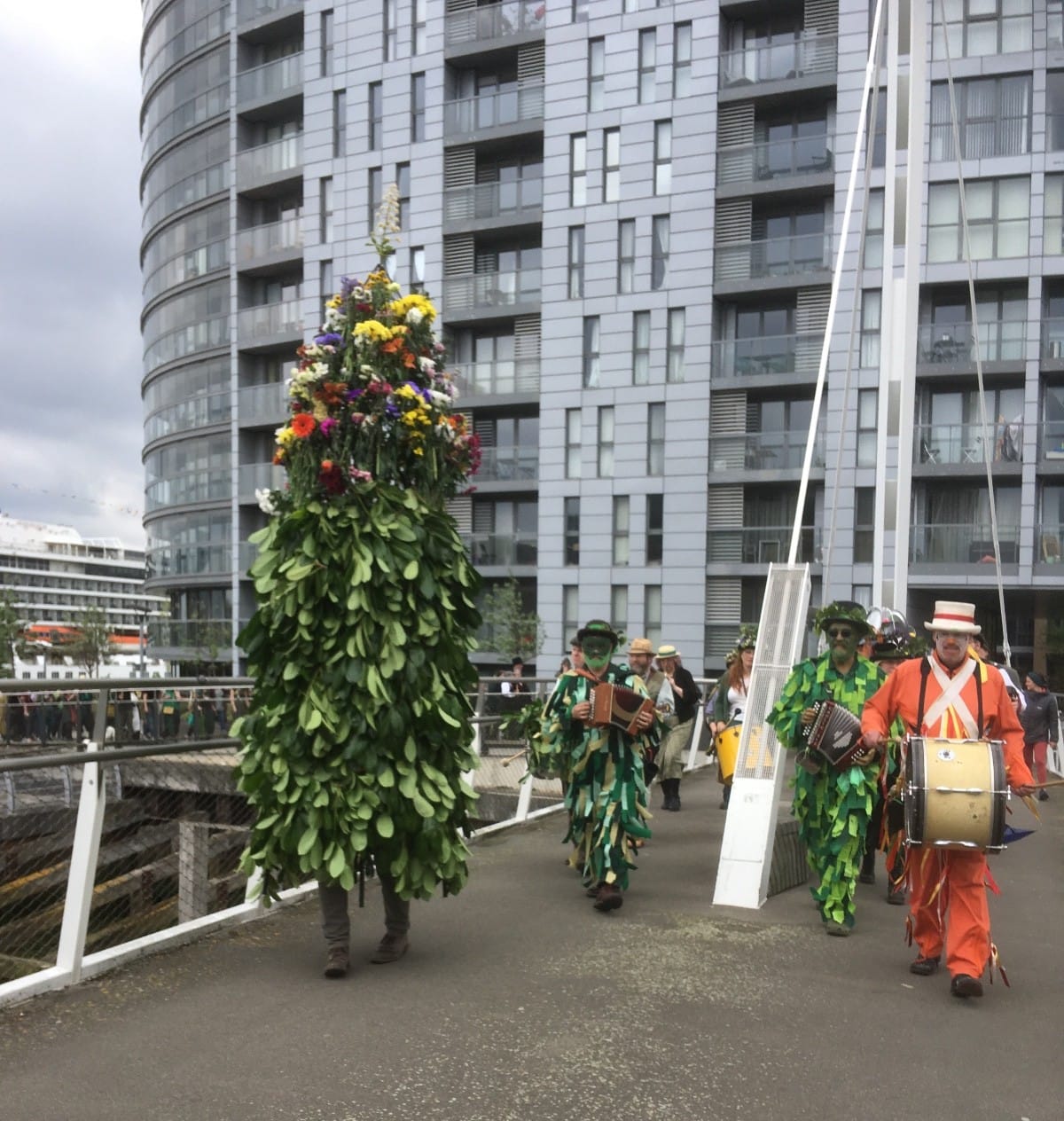
A blend of street art, urban ritual, and May Day paganism, south-east London’s Jack in the Green reappeared in the 1980s, when punk’s DIY imperative spurred Morris sides to reform and the rebirth of old folk traditions: Jack’s Alive!
For the past 40 years, the day-long ritual has evolved and flowed, centred round around a giant laurel and flower-clad Jack, fierce drumming, a cast of costumed characters, fiddles, accordion, dancing, drinking, and a parade between old pubs, with The Dog and Bell in Prince Street as its spiritual home.
This is where Jack is made, on May Day eve, and more recently, where he is slain.
A 'scratch' Morris, Fowlers Troop, forms for just this one May Day joined by a dynamic cast of musicians, dancers and revellers. Gloriously under the radar, there is no reliable website and no arts funding. It relies on word of mouth, posters in pubs and the social media accounts of the pubs en route.
For years, I always heard about it after the fact; a passing comment about a foliaged figure glimpsed beside the Thames in the City, or a dancing figure disappearing round the end of Deptford High Street. And then I would always forget, until May the following year ..
Its revival in the 80s was helmed by Morris dancers Mo Johnson and Sarah Crofts (of Blackheath Morris and Dacre Morris, Lewisham's women's Morris dancing team) among others, and its route has changed over the years, taking in Greenwich, the City and Deptford. Its route into the city led to surreal encounters with besuited bankers, and even the Stop the City protests in the 1980s.
A strong connection formed between Britain’s chimney sweeps and Jack in the Green at some point in the 18th century. Working class desperation underlies the merriment - the sweeps needed the cash they collected from the crowds in order to eat; their work dried up when spring arrived.
It is thought that the chimney sweeps built on a lucrative, May Day dance tradition which began in the mid-17th century - milkmaids would dance with flowers crowning their milk pails and heads, this then evolved into a pyramid headdress of flowers, ribbons and silver. Over time, the headdress became full-body and abracadabra: Jack was born.
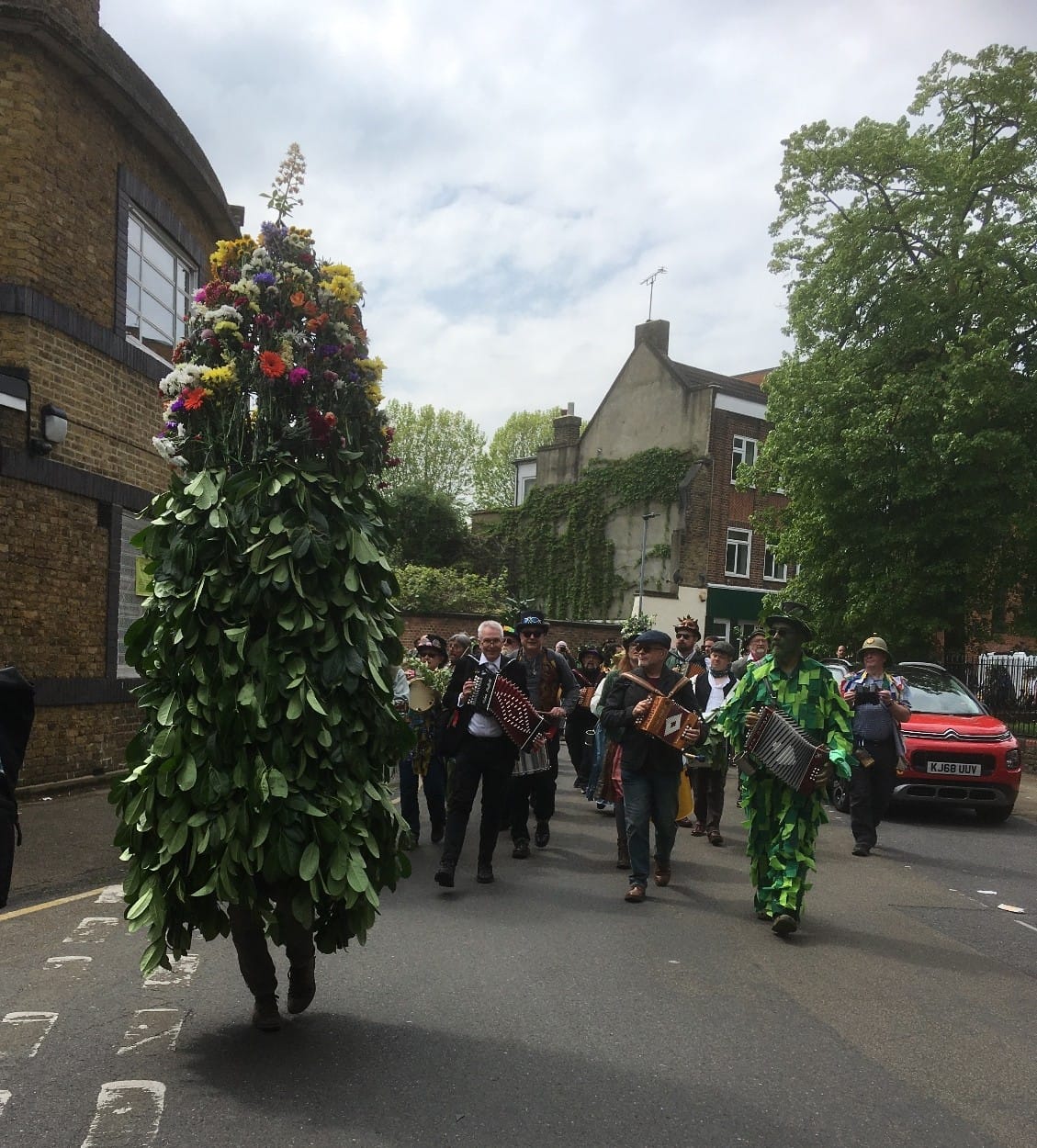
Roy Judge was a teacher in south east London from the 1950s until the 1980s. He developed an interest in folklore and researched Jack-in-the-Green and then the history of Morris dancing, becoming president of the Folklore Society in the early 1990s.
Judge examined local archives from 1770 onwards and concluded that Jack is a relatively modern, urban creation, and nothing to do with paganism. Nevertheless, he bears an uncanny resemblance to the ancient Green Man and the names are sometimes used interchangeably.
An enigmatic and tantalising early photograph of a Deptford Jack in the Green was taken by local photographer Thankfull Sturdee in 1906. His collection of photographs of Deptford is held in Lewisham borough archives.
A hundred years later, local Deptfordian ‘Baby Dave’ Aylward was inspired to recreate the image as part of his Rediscovered Urban Rituals project: Aylward (orange boiler suit, white clown face, dustpan, brush and drum) is an amalgam of both the Edwardian Tired Tim character and the drummer; other local figures brought their own magic and historical references, such as local clown Rankine MacFarlane’s alter ego Dr Burnheart Gloss and the Belles of London’ milkmaid tributes: ‘they had issues with cricked necks later’ .
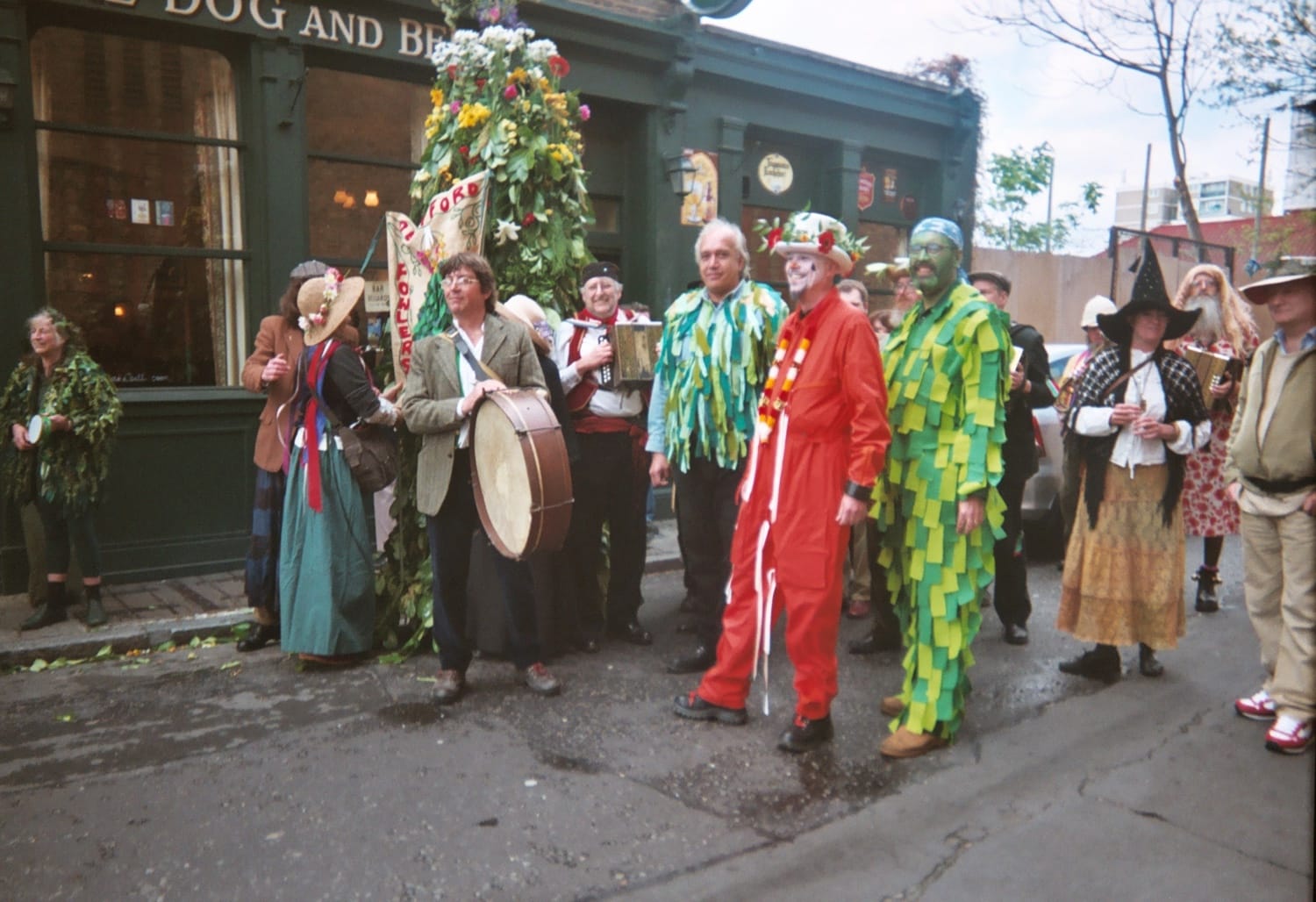
Aylward has helped push Jack’s centre of gravity back to Deptford in recent years, and new characters add fresh spice annually, such as artist Sarah Sparke’s Gut Girls tribute in May 2024.
Even vicars and imams have been involved, lending more laurel when the garden of Roy Judge doesn’t yield. When they ask: ‘what’s it for?’ and are told ‘a pagan rite’ their response has always been: ‘Oh, go on then, that’s fine!’
